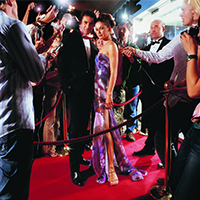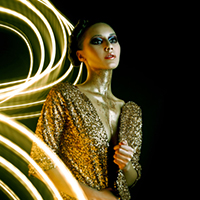

Oscars’ Dirty Little Secret.
We all know brands spend enormous sums of money for celebrity spokespeople. One print ad campaign running for 12 months may cost you at least $250,000. Just last Thursday, WWD reported that Meryl Streep turned down a custom couture Chanel design after Chanel refused to pay her to wear it. Meryl Streep vehemently denied she ever requested payment and in fact, went so far to say she never receives payment.
But, that isn’t true for many celebrities. And, it is considered the dirty little secret Hollywood likes to keep down under. Not only do celebrities receive payment, so do many of their stylists. In a 2015 interview with celebrity stylists, which took place with a senior editor of New York Magazine’s “The Cut” blog, many stylists came clean and admitted that it is not uncommon for brands to pay celebrities and their stylists for a certain dress or jewelry to be worn at a big event. They also went on to say they themselves have never been offered money to dress a client. But, Jessica Paster (stylist for Cate Blanchett, Sandra Bullock, Rachel McAdams and Emily Blunt to name a few) said she absolutely has. As for the actual payment, Paster said, “We get anywhere between $30,000 to $50,000. Or it includes paying the actress something between $100,000 and $250,000.”
Herein lies the problem: Being so hush-hush about whether or not you have received payment actually has legal ramifications and truth-in-advertising issues.
The Federal Trade Commission (FTC) prohibits the utilization of unfair or deceptive acts and practices in the market. If no one knows is it deceptive? According to the FTC Act and guidelines, the answer is probably yes. According to the FTC, consumers have the right to have access to “information they need to make informed purchasing choices,” and sellers “deserve the opportunity to compete in a marketplace free of deception and unfair practices.” In addition, basic truth-in-advertising comes into play if it misleads the consumer and if it appears as anything other than an actual ad. So, if an actress is wearing Forevermark diamonds and has been paid to wear Forevermark diamonds (and it has not been disclosed), does it serve as an endorsement? One law office believes that is true. Venable, LLP, with offices in Maryland, California, New York, Washington DC and Virginia, says that there is no question that the celebrities were giving endorsements. According to Venable’s Daniel S. Blynn, a partner in the firm’s national Advertising and Marketing Practice, “The salient issue becomes whether or not the actors and actresses should have clearly and conspicuously disclosed that they received their attire for free in exchange for identifying the designers and gushing about their clothing.”
Will anything ever become of it? Probably not. Celebrities tend to be held to a different standard. In the advertising world, here’s the most important question: Does all of this move the needle for most brands? According to a February 2016 article in Racked, the answer may surprise you. Donna Karan and Gucci actually think it has no bearing at all. Valentino greatly reduced his celebrity dressing to two in 2015 and his sales increased 36%. The conclusion in the Racked article: “…it appears that red carpet appearances don’t have an appreciable effect on designers’ revenue.” In reality, most of these dresses are one-offs and nothing most consumers can afford.
But, you have to admit. It’s a great gig if you can get it.


